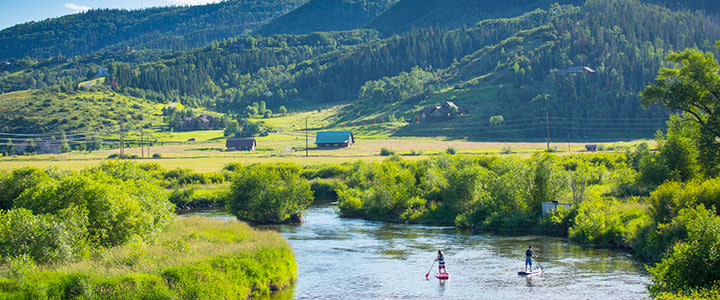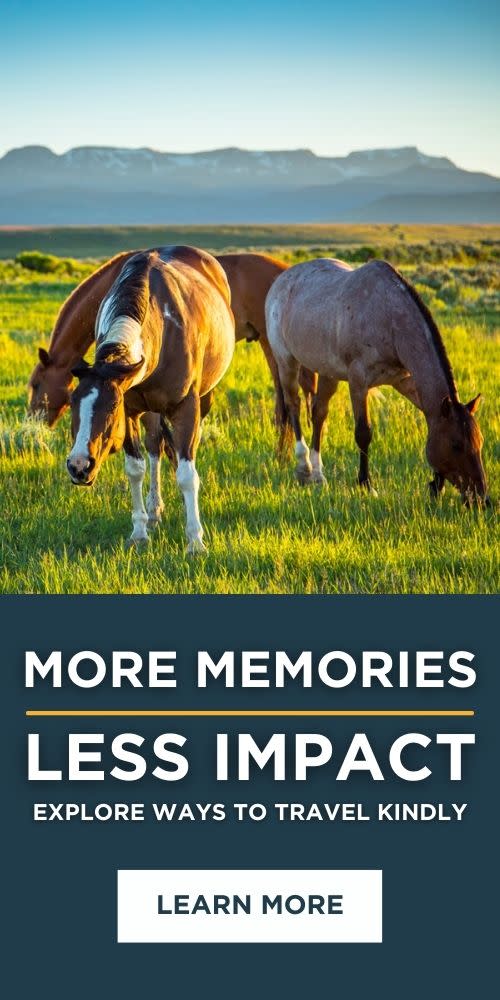
Many cities and towns are defined by the rivers that run through them, and Steamboat Springs, Colorado, has one of the country’s more unique waterways as a major attraction. The Yampa is the only unobstructed river in Colorado, flowing freely without major diversions or dams. Measuring 260 miles from the headwaters in the Flat Tops mountain range, it flows north through high alpine forests and canyons to Stagecoach Reservoir and Lake Catamount before reaching Steamboat Springs. From Steamboat, the Yampa flows west nearly to the Utah border, where it meanders among sagebrush and arid landscapes before joining the Green River.
Evidence shows that ancient desert cultures inhabited the Yampa River basin 1,000 years ago, long before the area was frequented by Native American tribes. The word "yampa" refers to a parsley-like plant that grows along the river, but the Snake Indian name wasn’t circulated until explorer John C. Fremont recorded it around 1843. The river was an alluring feature for ranchers and farmers who settled into the Yampa’s watershed in the 1870s, and to this day it’s still the lifeblood of the area’s bountiful ranching and agricultural productions.
Of course, in the Steamboat Springs region, the Yampa has proven to be a fundamental source of fun. Whether you’re admiring a glistening waterfall, pedaling along its banks, reeling in a trout, or floating lazily along in an inflatable tube, the Yampa is the centerpiece of a wide variety of recreational opportunities. Ready to start exploring yourself? Here’s a rundown of how you can enjoy the Yampa River on a memorable trip to Steamboat Springs.
 Fishing
Fishing
Home to native fish such as the Colorado pikeminnow and humpback chub (both of which are scarce elsewhere in the state), the Yampa is famous for its trophy-sized rainbow trout. Several access points are attractive to anglers, but some of the most popular include the headwaters in White River National Park and in its tributary, Bear River, near the town of Yampa. Stagecoach Reservoir is another hot spot, with its sprawling banks offering anglers the opportunity to find a peaceful slice of water to call their own. The tailwaters below the dam are prime habitat for all kinds of trout—brook, brown, and the notoriously gigantic rainbow.
It’s not uncommon for anglers to wade into the river in the heart of downtown Steamboat, as this section is rife with dark pools, boulders, and thick foliage where trout like to hide out. Keep in mind that the in-town segments of river are all catch-and-release, and you’ll likely find it bustling with tubers, rafters and kayakers. You must possess a Colorado fishing license prior to fishing the Yampa. (Learn more here.)
Hiking
The gurgle of water brings an element of Zen to any hike, and no grand finale is quite like the sight and sound of powerful waterfalls. The most popular hike in the area is Fish Creek Falls, which flows into the Yampa. The lower falls trail is accessible for all levels of hikers, but is best done early in the morning as both the trailhead parking lot and trail can overflow with traffic by mid-day. The lower falls can be reached by walking a quarter mile on an easy gravel path from the trailhead, which is located up Fish Creek Road about 3.5 miles from downtown Steamboat. The falls cascade from 280 feet above, crashing onto the rocks below.
To reach the upper falls, continue on the steep trail as it switches back and forth up the forested canyon. The trees—both pine and aspen—periodically open to views of the cascading water and to bird’s-eye views of downtown Steamboat before you reach the upper falls after climbing about 1,400 feet over the 2.5-mile trek. Come back the way you came. Be sure to pack bug spray, sturdy shoes, and plenty of water if you plan to go to the upper falls.
Biking, Running, and Walking
To truly appreciate the river, try pedaling or jogging on the serene Yampa River Core Trail. The completely paved route winds alongside the river for 7.5 miles between the north and south ends of Steamboat. Crossing the river and creeks over numerous bridges, the trail wanders through vibrant green cottonwoods and a series of parks and picnic areas, including the colorful Yampa River Botanic Park.
 Tubing
Tubing
There’s nothing more relaxing than letting the river do the work. You won’t be alone, bobbing along the river down from the 5th Street Bridge, taking in views of Emerald Mountain, Howelsen Hill, and Black Sulphur Spring. The ideal time for tubing is late June to early August, depending on snowmelt and water levels. Wear plenty of sunscreen and sturdy sandals or water shoes (not flip flops) and do not bring glass or Styrofoam coolers. A handful of outfitters rent tubes and offer shuttle rides along the river, including Backdoor Sports, Bucking Rainbow, and One Stop Ski Shop.
Rafting
Find a bigger splash by floating as a group. Most raft trips on the Yampa start at the section near Steamboat Ski Resort, navigating a few exciting whitewater runs before chugging straight through downtown.
Kayaking
Whether you like to paddle harrowing rapids or practice your back flips in the ever-changing wave at Charlie’s Hole, the playful options run the gamut. A popular run is along the 25-mile stretch of water between the town of Yampa and Steamboat, where the water ranges between Class I and III and weaves through small canyons and lush ranch lands. Both Backdoor Sports and Bucking Rainbow offer daily kayak, raft, and stand-up paddleboard rentals.
Written by RootsRated Media for Steamboat Springs Chamber.
Featured image provided by John Serrao






